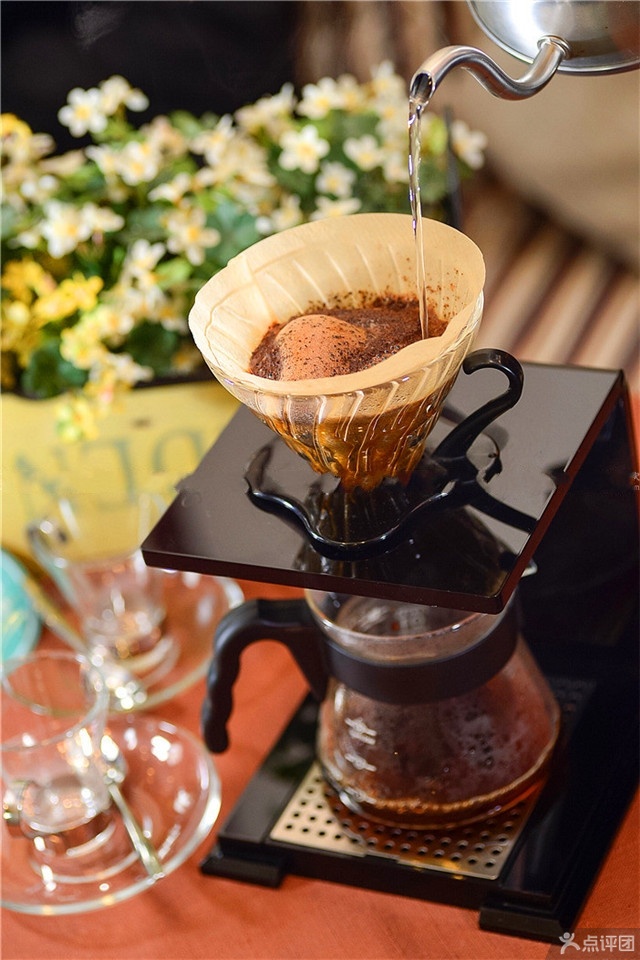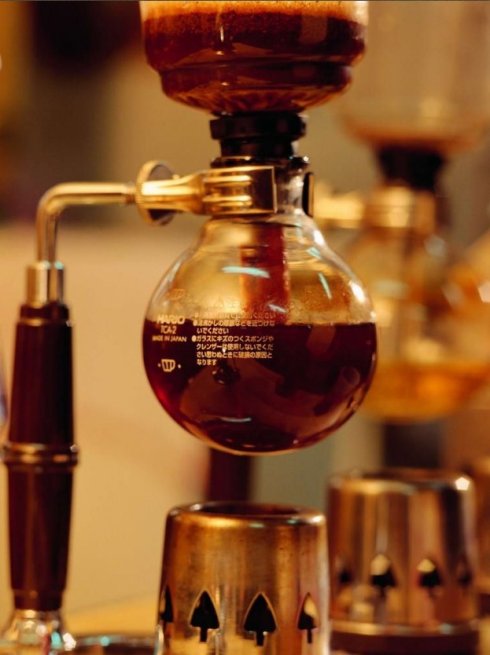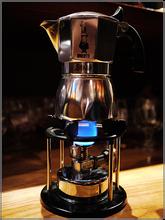Coffee brewing method: the historical origin and operation method of hand-made coffee
I like to make myself a cup of coffee at the beginning of the day, the beautiful melody of the bean grinder and the slow and graceful flow of the thin-mouth pot, as if gently opening the curtain of the day.
Making coffee by hand allows you to quietly focus on such a wonderful thing. I like to sort out my thoughts and adjust my mood in this quiet process. I feel as excited as waiting for the sunrise, small and surging. Every time I see the heat of the water from the small-mouth pot gradually fill the room with the rhythm of the hand, I suddenly have the illusion of wandering, as if to see the body gradually clear in the haze of life. Perhaps to put it this way, a good cup of coffee taught me about "slow refinement".
The above paragraph describes the hand-brewed coffee, also known as dripping coffee, which is actually the manual version of the American drip filter pot. With the arrival of the third wave of boutique coffee, after years of being dominated by the dazzling brewing process of siphon coffee, hand-brewed coffee has made a comeback recently. Hand-brewed coffee is actually the best way to reflect the original taste and personality of coffee. Compared with other production methods, hand-brewed coffee is more mellow, mild and smooth, with good balance and cleanliness. Delicious hand-brewed coffee can be made either in a coffee shop or at home. Hand-brewing coffee can be said to be a simple, easy-to-learn and interesting way.
The seemingly simple hand-made coffee actually has a lot of knowledge. A perfect cup of handmade coffee requires the brewer to have more than 5 years of coffee experience, not only skilled, but also adjust the brewing mode according to different varieties, water temperature and drinkers' preferences, so that the coffee always presents a perfect balance of "sweet, sour, bitter, mellow and fragrant" in front of people's eyes.
Seemingly easy, highly similar operation, in fact, also contains a variety of taste possibilities. Even the coffee brewed by the same person does not taste exactly the same every time. However, it is this mysterious uncertainty that makes people look forward to the coffee event that is about to happen, and there is an extra romantic temperament in those focused, rigorous and rational steps.
There are several factors that change the taste of hand-brewed coffee:
1. The degree of grinding of coffee powder; the thickness of coffee powder will also affect the extraction rate. The finer the coffee powder is, the higher the extraction rate is, and the coarser the coffee powder is, the smaller the extraction rate is. Generally speaking, the thickness requirement of hand punching is about moderate grinding, because if the grinding is too fine, many fine powders will easily precipitate at the bottom of the filter cup, causing blockage, slowing down the whole flow rate and prolonging the time (figure 5); if the grinding is too coarse, coffee powder is easy to be underextracted.
two。 The amount of powder; generally speaking, powder: water = about 1:12. Of course, this is just an idea, which mainly varies according to personal taste and taste differences in different regions.
3. Water temperature; the water temperature for making hand-brewed coffee is generally controlled between 88 and 95 degrees. The water temperature will affect the dissolution efficiency of the whole coffee, the higher the temperature is, the faster the dissolution rate is, and the more soluble substances are dissolved in the same extraction time, so generally speaking, the water temperature is too high to exceed 95 degrees, which is easy to make the bitter taste and astringent taste dissolve quickly. The lower the temperature, the slower the dissolution rate, and the less soluble substances are dissolved in the same extraction time, so generally speaking, the water temperature is too low, the coffee will be easy to thin, the good taste is not easy to extract, and steaming is not easy to complete.
4. The amount of water (the rhythm and speed of injecting hot water will affect the extraction time, which is the most difficult to control among the factors, and the process of making coffee stale most easily); generally speaking, the action of injecting hot water should be smooth and smooth, and the height of water injection should be moderate. The speed of the circle should also be the same.
5. Time; generally speaking, it takes at least three times to inject water into a cup of coffee. Too few times of water injection will lead to insufficient extraction, and too many times will lead to excessive extraction.
Note: in theory, if the above five elements are handled properly, the taste will not go wrong. strictly speaking, the control of point 4 is the most difficult and the easiest process to make coffee lose its flavor. But in fact, minimal differences in taste are acceptable to the extent allowed.

Source: blog of Mavericks Coffee
Important Notice :
前街咖啡 FrontStreet Coffee has moved to new addredd:
FrontStreet Coffee Address: 315,Donghua East Road,GuangZhou
Tel:020 38364473
- Prev

Coffee brewing method: Siphon pot history introduction and operation method
Siphon pot is the use of siphon principle, boiling water coffee powder, stew coffee flavor. Applicable coffee: slightly sour, medium alcohol coffee grinding degree: slightly coarser than powder, close to special grain fine sugar. Siphon coffee, let the living room into a coffee shop siphon brewing coffee, is a lot of coffee fans favorite. Some people say that because it can extract the most perfect parts of coffee, especially
- Next

Coffee brewing method: the historical origin and operation method of mocha pot
Today, when Italian coffee is popular all over the world, we are no stranger to Italian coffee machine, and even passers-by can name several Italian fancy coffee. But today we have more criticism and discrimination against the mocha pot, and we always question whether the coffee made by mocha is Espresso. In Italy, more than 90% of families own more than one family.
Related
- What is the meaning of lactic acid fermentation with coffee bean treatment?
- How to judge the state of foam by sound?
- How does the latte pull out the unicorn pattern? Come to get for a little trick to improve the flower pull!
- Will flower pulling affect the taste of the latte?
- Do you know the history of coffee?
- The difference between honey treatment and sun washing what is raisin honey treatment?
- What kind of milk can a novice use to make coffee foam to keep the foam longer? The correct method and skills of milking tutorial sharing
- Why do washed coffee beans taste sour? Flavor characteristics of washed Coffee
- Introduction to the skill of how to practice the size and height of water injection around the circle of hand-brewed coffee
- How do beginners practice coffee flower drawing from scratch?

